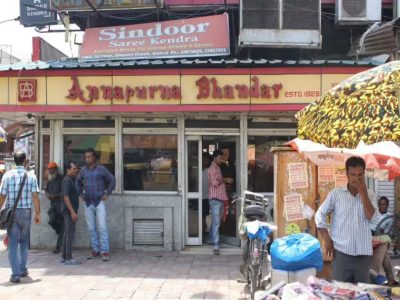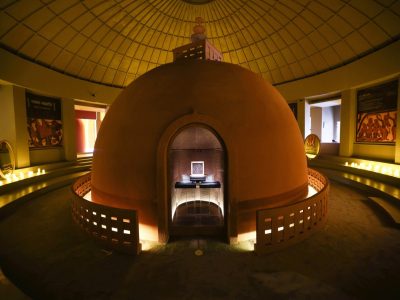Shipra Das has been a news photographer for more than four decades and has witnessed the making of India from a unique standpoint. Her story is inspirational
Shipra Das is one of the very few women news photographers in what’s primarily a male bastion—and she did it with gusto, and being a woman, was at a disadvantage. She dominated the scene for more than 40 years and her innings are far from over.
A matter-of-fact woman, driven by conviction, she doesn’t mince words, and her clarity of thought is reflected in her photographs. Spinster like her famous flatmate, chief minister of West Bengal, Mamata Banerjee, then a political activist—they lived together from 1989 to 1991 in Delhi. Her mannerisms are not very different and she seems to be made from a similar mould—fairly aggressive in their pursuits, and adversity makes them stronger and more focused in achieving their goals. And the two of them have been able to transform their lives with sheer audacity.
Shipra has been a close witness to political happenings in Delhi from the first row of photographers, she was always there, and no one could ignore her presence even in a crowd. She’s taken some iconic images in the political landscape of the capital and also employed her talent for social causes that have won her many awards.
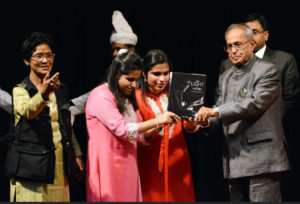
Her book—The Light Within: A Different Vision of Life—shed light on the life of the visually impaired, evoked awe, and didn’t seek pity or sympathy. The book was launched by the then president Pranab Mukherjee at Rashtrapati Bhavan in 2013. One of the many people her pictures overwhelmed was L K Advani who wrote in his blog in 2013, “I have in the past attended many book-release functions. But the one that I participated in on Monday this week was really unforgettable,” And Advani agrees with what the famous lyricist Gulzar had to say about her: “Sipra Das had a heart in place of the lenses on her camera. Those who see and feel the faces with their fingers, have an inner lens to see with their hearts.”
She has had an eventful career and worked for leading publications that includes PTI, Telegraph, India Today to list a few. Her pictures are gritty so is the story of her becoming a photographer—which is no less than a miracle. As if destiny chose her to be a photographer. “I was the first woman news photographer (in Bengal). I had to fight for it,” she says.
She grew up in Kolkata and the challenges she faced began at an early age. Born in a poor family, eldest of the six siblings, with a father sick without a livelihood, she started to fend for the family since she was in class 8—did odd tuitions for Rs 8 a month, and continued to go to school.
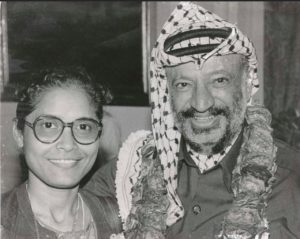
She worked hard for 14-15 hours a day through her formative years, juggling between jobs and making time for education, only to return home at midnight to wash utensils. The fact that she was the only breadwinner for the family ensured she was not forced to marry, a blessing in disguise. Given her family’s economic condition, “I would have been married off to a daily wage labourer, she recounts.
She was learning all the time while she was earning, which kept her in good stead. She started working as a sound editor for AIR and did many talk programs that would get Rs 5 per episode, she also did proofreading for some publications. There was a need for pictures for her news features, and would request photographers who were not very supportive. She decided to click her own pictures. She had no means to buy a camera.
A brother-like friend, Sanjeev, came to her rescue. He arranged for a dusty out of use camera, Isoly-II, and gave her a lesson for a few hours. She covered Ganga Sagar Mela. The pictures were fantastic. An ambition kindled, to be a photojournalist–gave her life a new direction. She had the talent, and Sanjeev gave her the necessary encouragement. A fast learner, soon she felt the need for a “bigger camera”.
Sanjeev arranged for a second-hand SLR camera—Asahi Pentax K 1000—that was to cost Rs 2,400, and she was allowed to pay in two equal installments of Rs 1,200 within a period of three months. As the luck would have it, she had accrued pending payments at AIR—Rs 800—that was released and she struggled to arrange the remaining money. Her mother came to her rescue. She got possession of the camera on paying the first installment. “That was such a happy day for me,” recollects Shipra.
From that day to this, there’s no looking back. Her first personal assignment was to shoot in a local Zoo–picture rolls used to have 36 shots at the time, all of them were great frames. Soon she graduated to news photography—a male bastion —and learned the tricks of the trade. She was determined and unperturbed, male domination motivated her to do better.
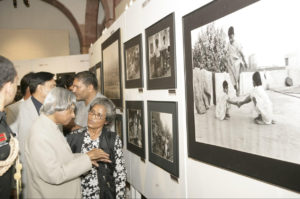
Her pictures were different, and were carried in plenty by Anand Bazar Patrika. There was a backlash. All the male photographers ganged up against her, and she was forced to tender a resignation on the same day she received her appointment letter. She joined PTI as a stringer photographer and was paid Rs 100 per shot carried. Her sheer hard work paid dividends, on average she gave three exclusive pictures a day—from the political, cultural and social landscapes of Kolkata. She’d make Rs 7,000 a month—more than the regular staff photographer.
Shipra’s ability to reach the right place at the right time, and her immense organizational skill to be able to send picture rolls in time, before other photographers, ensured that her pictures were carried in the leading dailies to the consternation of her male counterparts.
She defied all misplaced notions—that was almost considered an axiom—that women can’t be news photographers. She has been witness to many historical events that she captured beautifully by her camera. Her approach to life is very different, as reflected in her pictures that stand out—are anything but run-of-the-mill.
And she’s an artist who has operated at various levels, she has lived vagaries of life to be able to become a witness, a healer, capturing the humane aspect of existence, appreciate that real empowerment comes from being vulnerable. She gave voice to the voiceless, visibility to the unseen, her pictures have the power to convert grief and loss into a process of healing and hope. And she through decades of frantic news photography hasn’t lost her quintessential self, is proud of her humble origins, and secure in her own self.
She lives alone in Noida, her never say die approach guides her life, works for a publication, open for freelance assignments, her innings is far from over.
For more stories that cover the ongoings of Delhi NCR, follow us on:



